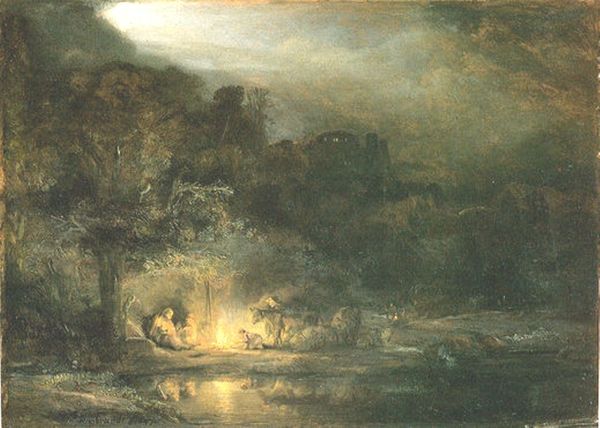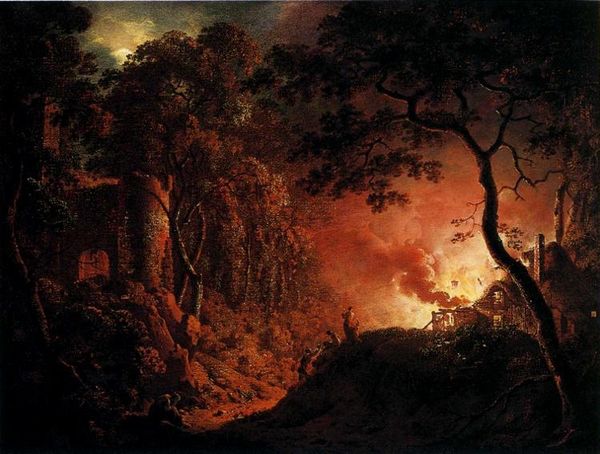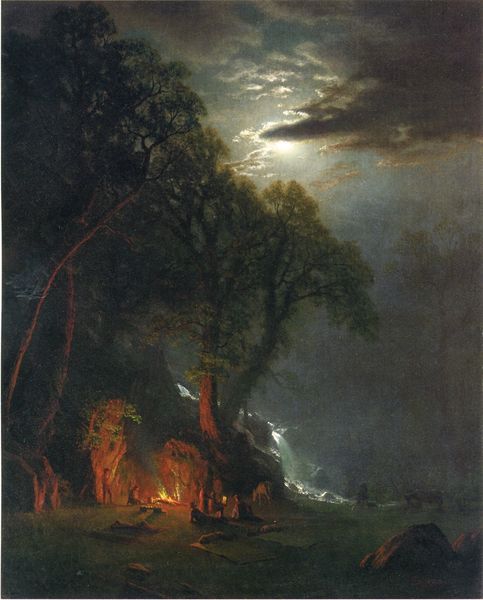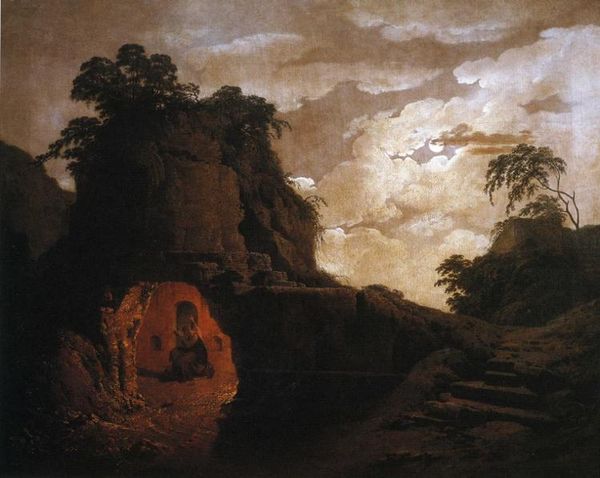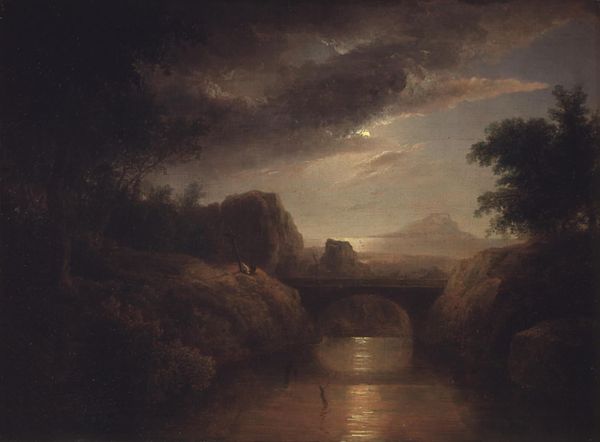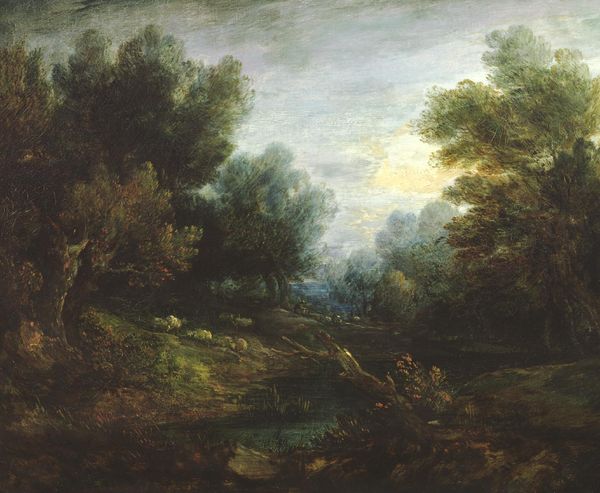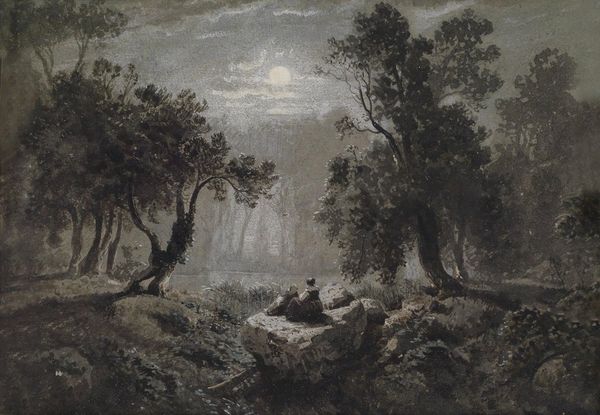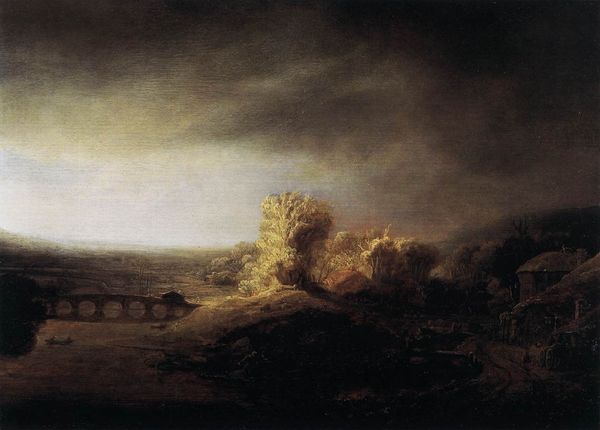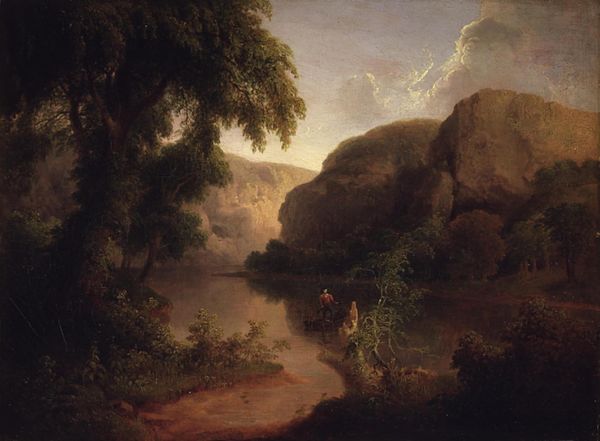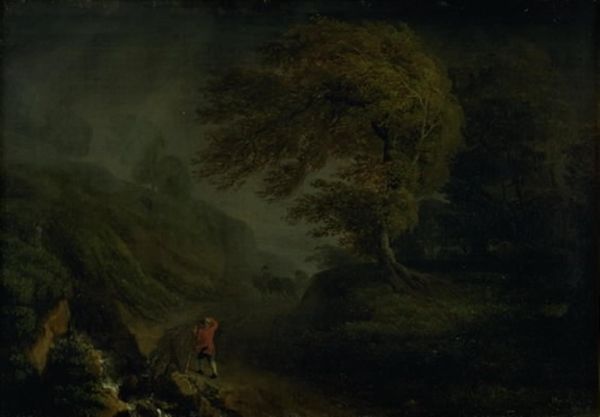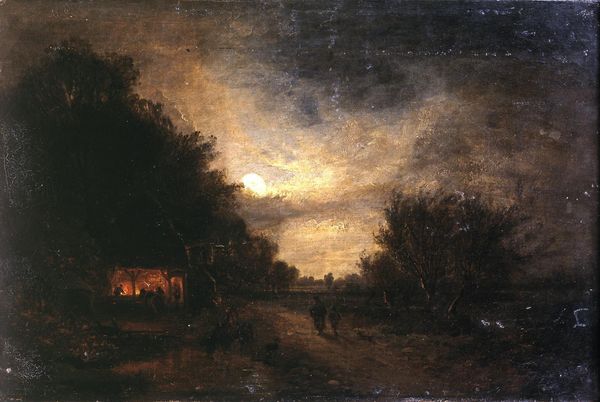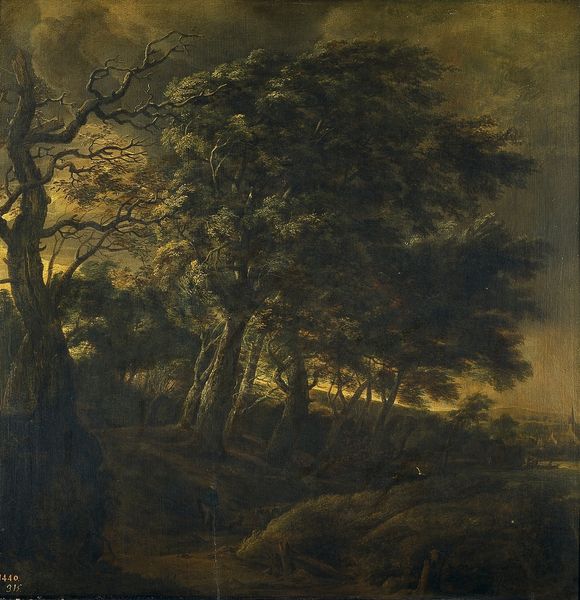
painting, oil-paint
#
fantasy art
#
painting
#
oil-paint
#
landscape
#
figuration
#
romanticism
#
chiaroscuro
#
history-painting
Copyright: Public Domain: Artvee
Editor: This is "Cottage on fire at night," an oil painting by Joseph Wright of Derby. There's a powerful contrast between the fiery scene and the serene moonlight. The depiction almost feels theatrical. What's your take on this piece? Curator: This painting immediately situates itself within a very specific visual language – Romanticism. We see this especially through the sublime: that aesthetic category where awe mingles with terror. Wright isn't just depicting a fire; he's presenting an event that evokes powerful emotions. The drama isn’t simply the event itself, but also how it affects the implied viewers, right? It invites reflection on how communities respond to crisis, the vulnerability of domestic spaces, and perhaps even broader anxieties about societal stability. What do you think the artist is communicating by setting this fire at night? Editor: Maybe the darkness amplifies the feeling of helplessness, heightens the drama. Like, without electricity, a fire is just so much more terrifying. Also, are those figures helping, or just watching? It's kind of hard to tell from here. Curator: Exactly! The figures contribute to that ambiguity. The lack of clarity allows viewers to project their own concerns and understanding of social dynamics onto the scene. Consider also the politics of representing the everyday – who is seen, who is rendered visible and in what circumstances? Wright is part of a growing trend of artists taking ‘common’ or ‘everyday’ life as subject matter, granting it a certain status and drawing attention to a class of people typically unacknowledged in earlier traditions. Editor: So it's not just about the pretty fire, but about showing these specific people experiencing the fire. The social dimension makes it way more relevant and relatable. Curator: Precisely. It allows us to interpret this artwork less as spectacle, and more as an act of witnessing, implicated in a specific set of social and political realities. Editor: This makes me consider the responsibility that comes with portraying hardship. Curator: Indeed. Considering the public role of art requires ethical evaluation, asking ‘what is the effect?’ and ‘who benefits?’ Editor: I see it now! I'll definitely look at similar works with that perspective in mind.
Comments
No comments
Be the first to comment and join the conversation on the ultimate creative platform.
